#outdoor figures
Explore tagged Tumblr posts
Text

When notable paperback cover artist Jack Faragasso was an ambitious young student at the prestigious Art Students League of New York, he hired Bettie Page as a reference model. This is one of his pictures from 1952. Faragasso would go on to paint hundreds of covers, and ultimately teach art at the League.
#jack faragasso#bettie page#1950s#1952#Art Students League of New York#reference model#paperback artist#landscapes#outdoor figures#science fiction
10 notes
·
View notes
Text

A magnificent beauty by the sea
2K notes
·
View notes
Text

airplane!
#GO SILVER GO!!! FLY LIKE A BAT IN THE WIND!!!!!! SOAR THRU THE SKIES YOU ABSOLUTE LEGEND!!!!!!#wouldve been fun to do the airplane while lilia is floating but you KNOW sebeks mom gives him the lecture of a lifetime after one go#they are so special. they are my world. hghgmmhg fambily#im not actually as mushy abt vanrouge family as i believe most of my diasom peers are but they are by far my fav thing to draw#to be clear i am mushy i just think im outranked LOL#looking at u lettie. ur tags always go so crazy for them i think of u anytime i draw them#but yea im so blatant and obvious abt the shit i like when i draw HVGFJBKD if someone cant figure me out atp its on them#silver fan of all time. fun fact im currently drawing a piece with like 15 silvers in it. one illustration. infinite silvers. i have a prob#i like drawing the outdoors most. ive decided. never drawing a closeup again i hope u like 5 pixel silvers on landscapes#twst#twstファンアート#twisted wonderland#twst silver#lilia vanrouge#suntails
1K notes
·
View notes
Text

Austin White
#naked outside#my gifs#country girls#gorgeous#perfect figure#all natural#farm girl#sexy country girls#sexy farmgirl#sexy outdoors
538 notes
·
View notes
Text

A Good Read - Kate Langley
Scottish , b. 1950s
Oil on canvas , 60.5 x 45.5 cm.
499 notes
·
View notes
Text


Rear View: appreciation of a sublime back
With the weekend 'behind' us, here's a rear view to cheer you as you get 'back' to work.
(NSFW🔞 Edition) / SFW Edition here.
Freya Mayer, from “Working On My Tan” at Ultra Films.
#freya mayer#strawberry blonde#blond girl#blonde#beautiful women#curvy girls#beautiful backside#beautiful back view#female back#rear view#outdoor nudity#artistic nude#female nude#pinup#pin up#pin up girl#lovely curves#curvy body#hourglass#hourglass body#perfect figure#wet women#wetgirl#bathing beauty#pool#sexy peachy bum 🍑#great legs#gorgeous legs#legs for days
48 notes
·
View notes
Text

"A Place of Their Own"
#men loving men#male couple#queer male couple#gay male couple#farmers#interracial gay couple#ai generated#ai art community#ai artwork#gay ai art#gay art#art direction#fashion illustration#ai gay#abdominals#male art#male form#male physique#male figure#domestic life#outdoors
40 notes
·
View notes
Text

Yu Meiren by Outdoor Mokei-ten
#outdoor mokei ten#yu meiren#yu mei ren#anime figure#figure collecting#fate#fate series#fate grand order#fgo#fate go#garage kit
51 notes
·
View notes
Text


Field studies
#these are a bit old lmao#but i figured I'd post them bc im kinda proud#fiel studies#field journal#field notes#sketches#naturecore#nature#corvidcore#adventurecore#forest#outdoor#Artists on tumblr#butterfly#butterflies#drawing#mushroom foraging#mushroom#fungi#outdoor adventure#cottagecore#crowlivar#original art#crowcore#goblincore#gremlincore#plants#gremlin community#naturalist journal#nature journal
46 notes
·
View notes
Text


Faith in Photodromm's "New Country"
#faith#photodromm#naked outside#my gifs#country girls#gorgeous#perfect figure#all natural#farm girl#sexy country girls#sexy farmgirl#sexy outdoors
140 notes
·
View notes
Text










Photography is art. Because I said so. And others, too. Prolly.
I love taking photos so much, especially in the rain. Megatron is so pretty and perfect, how can I not??? He's made for the camera. And my park has plenty of settings to shoot! More to come in the future...
#transformers#transformers idw#transformers mtmte#transformers lost light#megatron#megatron idw#idw megatron#photoshoot#photo#photography#outdoors#outdoor photography#transformers toys#transformers figures
41 notes
·
View notes
Text



Triple Threat
Naturally fiery hair, beautiful big brown eyes, a smattering of freckles (gotta love those!), and a sublime rear view with an even better front view.
Amber is not just beautiful: if you check out her other work, you'll see that she's very talented as both a model and a photographer.
Amber Rose McConnell, from “Fresh Essence” at Playboy Plus.
#amber rose mcconnell#red hair#ginger#redhead#redmenace#kissed by fire#beautiful women#curvy girls#beautiful backside#beautiful back view#female back#rear view#triple threat#freckles#frecklicious#outdoor nudity#female nude#art nude#teasing#pinup#pin up girl#so hot 🔥🔥🔥#hot as hell#beautiful eyes#doe eyes#lovely curves#curvy body#hourglass#hourglass body#perfect figure
20 notes
·
View notes
Text
Supporting Your Plants for Cheap
This is my fifth post in a series I'll be making on how to increase biodiversity on a budget! I’m not an expert--just an enthusiast--but I hope something you find here helps!
Once you start gardening, you’ll find a lot of things go into it, and it can be a bit daunting to think about--especially if you’re trying to keep things low-cost. Fortunately, it doesn’t have to be as hard--or as expensive--as it initially appears.
Composting
There’s several different ways to compost, any of which are helpful indirecting food waste and nutrients out of landfills and into your soil--which in and of itself can help increase biodiversity by making the space more livable for microorganisms and insects, which then cycles around to the rest of the habitat.
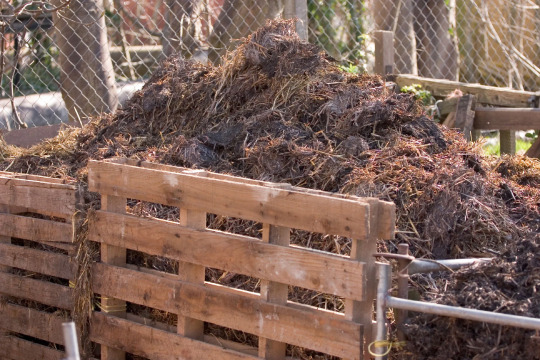
The classic one you see is hot composting. Most of the time, when I see hot composting set ups online, or hear people talking about them, it’s like listening to a wizard cast an intricate spell and prattle on about ratios and temperatures and special ingredients while standing over a detailed self-built setup made of the finest wood money can buy. Fortunately, it doesn’t have to be complicated. First off, there’s lots of ways to make compost bins--some can be more expensive than others, but there’s definitely options asides from buying pre-made tumblers or getting an engineering degree. I’ve seen people use metal trash cans dug into the ground, make compost pile setups out of old pallets, or just pile stuff up and leave it. While using different ratios of certain items can help them decompose faster, it’s ultimately not something you need to worry about a lot. If it can break down, it’ll break down--it just might take awhile. Composting this way can also help provide habitat--some insects like bumblebees have been known to make nests in compost heaps. In addition, it provides a robust ecosystem for decomposers like worms and other organisms, and bats and birds will be attracted to open-top piles to eat flying bugs that live off the compost. Amphibians enjoy them for humidity, warmth, and feasting on insects. Do note that sometimes snakes may also rest in and lay eggs in compost heaps, so be careful when turning them.
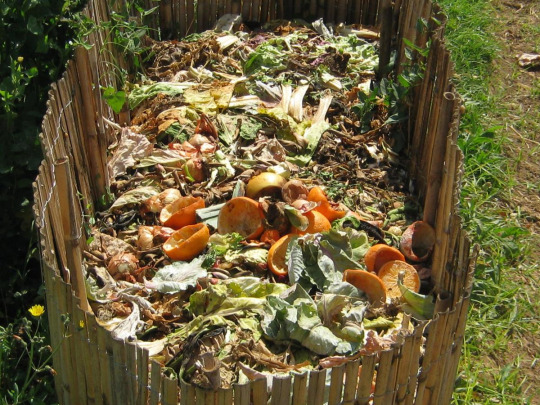
Do note, though, that if your compost pile looks like that you're getting roaches and rats and raccoons out of your goddamn mind. Bury the food scraps.
Personally, when I compost, I use a worm bin--they’re a fantastic option for limited space and limiting smells. I keep mine outside in a big rubbermaid tote with holes drilled into the bottom, sides, and lid. I put a layer or two of weed block on the inside, so it’s still able to drain but keeps the worms from trying to escape during rainy days. There is an initial cost of buying the worms, getting enough bedding materials, and getting a new bin if you don’t have an old one suitable for use. But with occasional feeding, it should sustain itself and provide valuable worm castings that can be used in the garden. Please do note, however, that earthworms are considered invasive in some places.

Look at that worm bin-y goodness. This is a pic of my bin, from earlier this month!
Though I’ve never done it, I’ve heard of people having good results with bokashi composting--a method that’s done in a bucket, and is relatively easy to do indoors.

Once you start a composting system, keeping it stockpiled with organic material can become pretty easy for cheap. In general, if it comes from a plant, it’s safe to use. It’s also a good idea to avoid putting already-cooked things in a pile, as salts and sauces can kill beneficial bacteria in the compost while also attracting animals. Adding meat is also generally avoided to not attract animals. But below are some things that I’ve put in my worm bin quick, easy, and cheaply; or things I’ve seen friends put in their compost piles.
Cooking scraps/snack leftovers--things like cut up bell peppers, the ends of tomatoes, strawberry tops, apple cores, watermelon rinds, coffee grounds, and orange peels are amassed somewhat quickly in my house--my dad likes to cook. Around holidays like Thanksgiving and Christmas? Corn husks, potato peels, sweet potato fibers, leftover greens and other trimmings are a feast for compost piles and worm bins.
Vegetables and Stuff that went bad in the fridge/pantry--we’re constantly victims of the ‘forgot it was there’ conundrum. Fridge cleanouts are great times to decide what can be tossed to the compost--moldy bell peppers, spotty celery, questionable carrots, onion halves, old eggs, bagged salads, and stale/moldy bread have all been tossed into the pile before!
Grass clippings--though my worms don’t like grass clippings, they’re still great material for a classic hot compost set-up!
Fallen leaves--another classic addition to a hot compost pile. Some friends keep them stocked up and stored for later use.
Plant trimmings--what is plant clean up if not compost material? I’ve put cleaned-out sunflower heads and stalks in my worm bin, and they decomposed after about two months. If you get blossom end rot on your tomatoes or peppers, they’re still fair game for the bin as well!
Shredded mail--just make sure to not put in the thin plastic that covers the address section on some envelopes. Otherwise? As long as the paper isn’t glossy, it should be great for a bin or pile! Shredded paper or cardboard also makes great bedding for worm bins. Put those Amazon boxes to good use!
Pumpkins! Snag your neighbor’s halloween pumpkins in November and toss them in my compost! Last year my dad went around the cul-de-sac and nabbed all of the post-halloween pumpkins, the worms loved it.
Christmas tree needles--can’t confirm I’ve tried this, but it seems like it would work.
Mulch
Mulch is an excellent way to keep your soil moist, while also beginning and continuing to improve soil conditions as it breaks down into organic matter. You’ll have to water less, and it’ll prevent/slow down the growth of unwanted weeds (which is always the final straw to gardening for me, I get so overwhelmed I just stop going outside). Win-win situation, right? Except stepping into a Home Depot and finding mulch being sold for five dollars per square foot and knowing you have to cover a whole garden with it all can add up… pretty quickly, to say the least.

Fortunately, there are a few solutions to this, and likely from your own backyard!
Grass clippings are the first that come to mind. If you’re mowing your lawn, or have neighbors who are, collecting the clippings and spreading them over your soil is a cheap and easy option for some quick mulch. It’ll be very nitrogen-heavy, so keep that in mind, but it’ll still prevent weeds, retain moisture, and break down into organic material over the course of a few months. Do try to not use grass clippings you know are treated with pesticides, since the aim is to use this mulch to help increase your biodiversity, and having insects around plays a big role in that.

Fallen leaves are the next that comes to mind. If you’ve got a tree in your yard, or in your neighborhood, then you or someone around you knows the neverending avalanche of leaves or pine needles that drop come fall. As mentioned before, they can be used to make brush piles for creatures, or added into compost, but they have a fantastic third use as mulch. Add them on top of your beds!
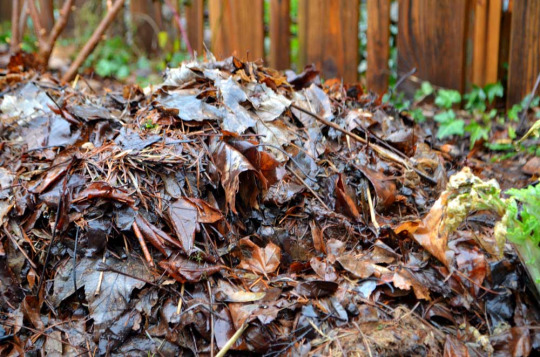
Want free wood mulch? A program called Chip Drop might be the best solution for you! They team up with arborists to find cheap drop sites for shredded wood, logs, etc. that are produced as they maintain trees! If any local arborists tied to the program are operating in your area, instead of paying to dump the resulting mulch at a landfill or some other dumpside, they’ll simply dump it at your place! Now, you won’t be able to control when the mulch gets dropped--I’ve heard of people coming home from work one day to find a chip drop in their driveway. But… free mulch!
Want wood chips but not a whole truck load? If an arborist is working in your area, and you can muster the courage, its worth a shot to ask! One time someone in my neighborhood was getting a tree removed, so my Dad and I parked near their car with a tarp in the trunk, some shovels, and an old storage bin. We approached nicely and asked if we could have some chips, and they were totally cool with it! At that point, how much you get depends on how big your trunk space is, and how many times you’re willing to ferry mulch back and forth out of your car so you can go back for more. But it is an option! Alternatively, you can ask them to dump the whole load in front of your house, but at least you’ll know when and where it’s happening!
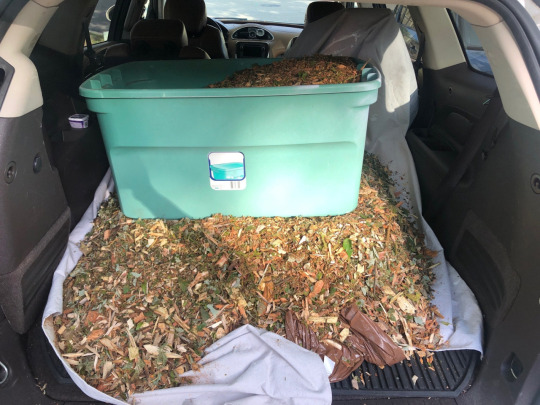
Trellises
Many plants need, or will appreciate, some kind of climbing structure. But trellises aren’t often cheap to find. To that, I say--we’ll create our own!

One popular option is to grow taller plants, and then plant climbing species are few weeks/years later so they’ll climb the taller plants! I’ve planted passion vine near a tree in my garden for it to climb, and I’ve seen people do similar concepts with sunflowers, corn, and other such plants! Sunflower stalks can provide support even after they’ve been cut back.
A combination of wood, some stakes, some nails, and some string can create a great frame trellis that can be used for beans, tomatoes, vines, etc--so I’m sure if could be put to good use for native climbers, especially since my dad’s used this structure for passion vines before. You may have to replace the string every year, but most of the time, the string is compostable anyways!
This may take a bit more setup and have a more upfront cost, but creating a trellis out of cattle panels makes a durable structure that can support all kinds of vining plants!
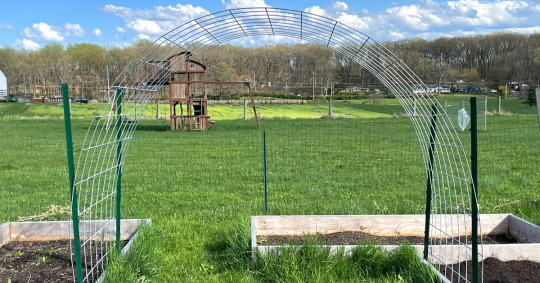
Of course, there’s always the easy alternative of simply letting plants climb along your fence! This is especially easy if you have a chain link fence, but wooden fences are plenty suitable for some species as well! I’ve seen passion vines do great growing along chain link fences as supports, and one of my favorite sights as a kid was always seeing bushels of trumpet vines growing up and over fences on the drive home.
Why are we worrying about trellises? Creatures are attracted to diverse landscapes with a variety of plants within them, so having a few climbers can be a great way to attract more wildlife! I know some plants in my area that pollinators are attracted to, or even rely on as host plants, are climbers that can get upwards of 15 feet tall, and will climb any surface you give them. A trellis provides you a great place to put extremely beneficial plants.
That's the end of this post! My next post is gonna be about how different 'kinds' of plants can all be beneficial in a biodiversity standpoint. Until then, I hope this advice was helpful! Feel free to reply with any questions, your success stories, or anything you think I may have forgotten to add in!
#biodiversity#solarpunk#gardening#outdoor gardening#composting#mulch#trellis#budget gardening#cheap gardening#ani rambles#out of queue#the biodiversity saga#i remember junior year of college me and my friends considered doing a cattle panel trellis#but then we couldn't figure out where to buy cattle panel#apparently the answer is 'tractor/farmer supply companies'#also so anyone reading these tags knows what took me 5+ years to learn#CATTLE PANEL DOESNT COME IN ROLLS IT COMES IN LENGTHS#all this time I was like 'man i wanna make a cattle panel trellis but it comes in like 40 foot lengths and i dont need that much'#and all my gardening homies were confused because theyve been getting it in lengths THIS WHOLE TIME#I WAS LOOKING AT FUCKIN ROLLED FENCING#i actually dont think any of the big box stores by me even fuckin sell cattle panel but thats beside the point#you can get it delivered though#(Delivered to the store for pickup i think)#someday i want a cattle panel trellis with like moonflowers or trumpet vine just a BURST of color and life
312 notes
·
View notes
Text






October outdoor sketchbook highlights. Went to Beijing and Seoul this month!
#my art#art#sketchbook#artists on tumblr#traditional art#outdoor studies#figure studies#travel#travel log#beijing#seoul#monthly highlights#traditional clothing#gouache
21 notes
·
View notes
Text

Alice Antoinette in Playboy's "Off Road Exposure"
#alice antoinette#my gifs#country girls#gorgeous#perfect figure#all natural#farm girl#sexy country girls#sexy farmgirl#sexy outdoors#playboy video
132 notes
·
View notes
Text
Watching the water rush by



#transformers#transformers g1#tf g1#transformers figures#transformers rodimus#tf rodimus#Rodimus#g1 rodimus#transformers blaster#blaster transformers#tf blaster#blaster#g1 blaster#rodiblast#Blastimus#maccadams#maccadam#toy photography#toy pics#rodimus#outdoor photography
25 notes
·
View notes